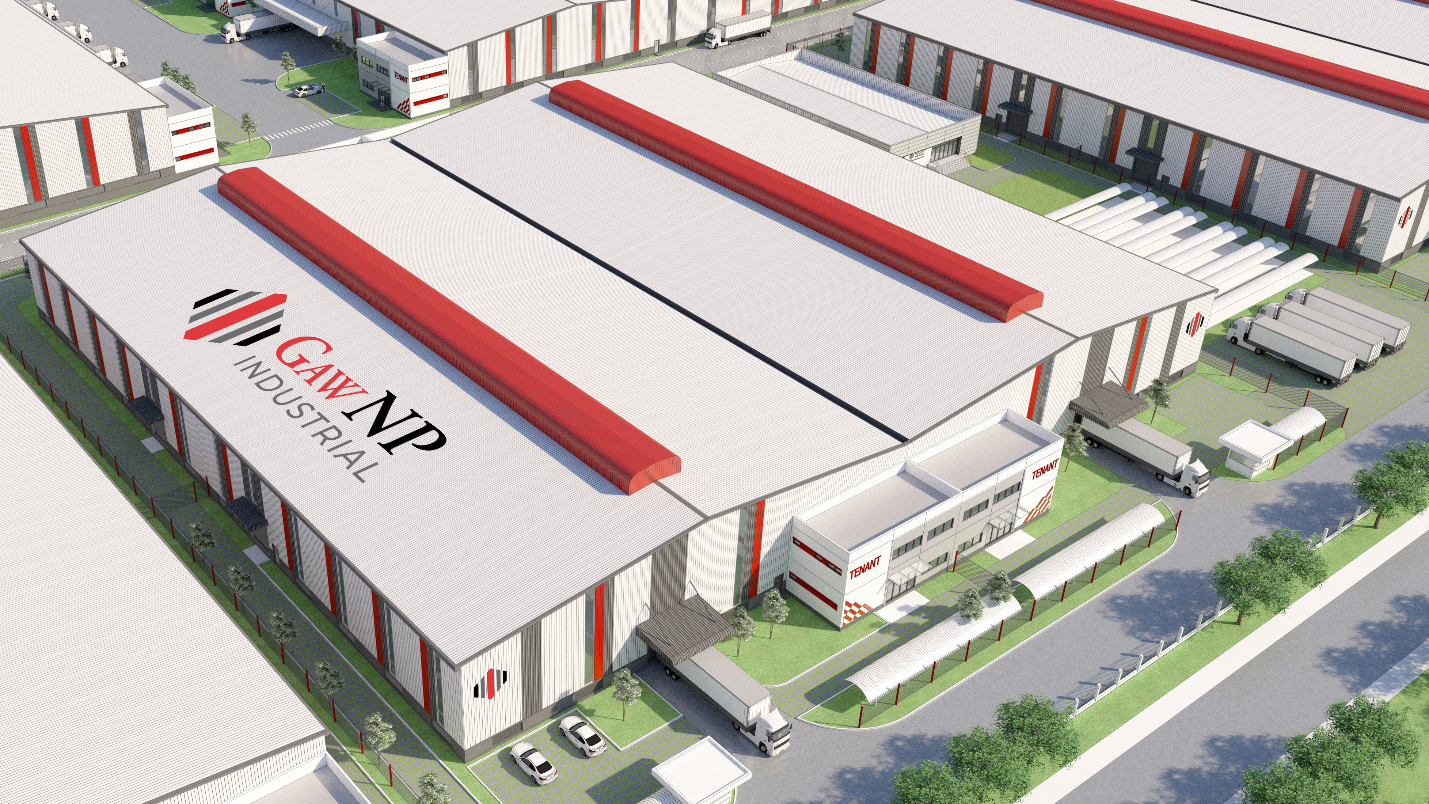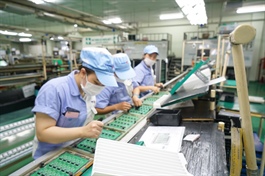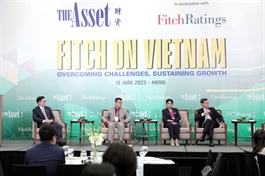Gaining the confidence of foreign investors
Gaining the confidence of foreign investors
Vietnam’s successful attraction of foreign investment over the years places it as a leading country among economies of similar size. Dominic Scriven, chairman of Dragon Capital Fund Management Company, told Luu Huong how Vietnam possesses ample confidence to channel such funding into its infrastructure, and also looks at the future prospects of the stock market.
You first arrived in Vietnam over 30 years ago and Dragon Capital has also been operational here for almost the same length of time. What are your observations about the influx of foreign capital into Vietnam?
The sequence of law enactments in the late 1980s and early 1990s indicated the Vietnamese government’s focus on attracting international investment, with foreign direct investment (FDI) becoming an essential component of the country’s economy.
The history of FDI attraction in different economies reveals four levels of investment. The first level involves pioneering companies exploiting the market, focusing primarily on extracting mineral resources such as coffee, iron and steel, coal, and timber, among others. The second level entails setting up production factories but with little investment in technology, mainly relying on labour, as evident in the textile and footwear industries.
The third level sees foreign businesses investing in domestic markets, revolving around import sales activities, followed by the assembly of imported components. Gradually, many foreign companies expanded their operations to build supply chains and produce some components to minimise imports, such as Honda’s factories.
The final level comprises foreign businesses that invest in infrastructure, a capital-intensive field with prolonged capital recovery times and low-profit margins, requiring significant investor confidence in the investment environment.
I once convinced a Middle Eastern investment fund to pour money into Vietnam’s infrastructure. They compared the return on equity for investing in Vietnam’s infrastructure and Australia’s, and found that investing in Vietnam’s infrastructure offered a higher return. However, this fund still chose to invest in Australia, believing that the investment environment there was safer, more transparent, and carried lower risks.
This attests to the multifaceted requirements that must be met to gain the confidence of foreign funds, including macroeconomic stability, political stability, legal consistency, and an open and efficient governmental apparatus as a prerequisite.
Overall, Vietnam has emerged as the most successful nation in attracting FDI among economies of similar scale, with a remarkably high FDI-to-GDP ratio. Approximately a decade ago, FDI accounted for around 6-7 per cent of GDP, whereas presently it stands at approximately 5 per cent.
Notably, whereas previously there was a significant disparity between committed and actual FDI, the gap has narrowed, with realised FDI almost equivalent to the government’s plan for public investment disbursement into infrastructure.
Attracting FDI is a pivotal solution to expedite the improvement of Vietnam’s infrastructure, particularly in the realm of transportation, which has been deemed inadequate. Do you have any recommendations for attracting funding in the infrastructure network?
The delayed influx in this area, particularly through large-scale transportation projects, can be attributed to a lack of requisite flexibility in the current mechanism. As investment capital increases, it becomes more challenging to approve corresponding capital increases while foreign investors are left waiting.
Moreover, it is imperative to determine whether foreign investors are to be engaged in the infrastructure sector, such as water supply, airports, aviation, and other related services. Each country has its own stance on the proportion of FDI in this sector. Some nations maintain a highly open stance; for instance, in the United Kingdom, foreign businesses largely contribute to electricity, water, and waste treatment, as well as airport and highway services.
I acknowledge that attracting FDI into infrastructure may not currently be a top priority for Vietnam. On the other hand, inflows into the sector also reflect the international capital’s confidence in the host government.
I also recognise the Vietnamese government’s inclination towards foreign-invested enterprises supporting the domestic manufacturing sector, while concurrently enhancing Vietnam’s position in the global value chain to boost the complexity level of Vietnamese-made products.
In the near future, more than 140 countries will be implementing a minimum tax rate of 15 per cent for multinational corporations with total revenues of at least €750 million ($823.16 million). How will this affect Vietnam?
The multilateral agreement aims to counter tax base erosion and thwart a race to the bottom in terms of taxation, a challenge that the Vietnamese government and relevant agencies must thoroughly contemplate, given the country’s reliance on investment incentives, including tax incentives.
The imposition of this minimum tax rate may result in additional tax liabilities for multinationals operating in Vietnam, potentially undermining the country’s competitive investment environment and jeopardising its revenue generation. Hence, Vietnam must expeditiously adopt measures to re-evaluate and adjust its investment incentive policies, while also enhancing the domestic investment climate and cultivating a skilled workforce, to avoid over-reliance on tax incentives.
Against the backdrop of increasing FDI attractiveness, how do you assess the outlook for indirect investment towards Vietnam?
Over the past 10 years, the Vietnamese government has been proactive in promoting private sector engagement in the nation’s development, offering commitments and incentives in the capital market to foster access to diverse funding sources, enhance transparency, and create a level playing field for private businesses to flourish.
Such positive signals have piqued the interest of foreign investors, who see the potential in Vietnam’s capital market. Currently, the proportion of foreign-listed companies in the Vietnamese stock market remains limited. This contrasts with the Chinese market, where the government has effectively encouraged domestic companies to participate in the FDI chain by providing raw materials and services to bolster their positioning.
The much-anticipated upgrading of the Vietnamese stock market has been a perennial area of focus for policymakers. What are the imperative measures that the government should take in a bid to facilitate an upgrade?
The question of upgrading the Vietnamese stock market has been a major concern. The biggest bottleneck lies in our ability to implement a central counterparty (CCP) model for the underlying stock market. Currently, investors are required to have sufficient securities in their trading accounts before selling, and sufficient funds before placing buy orders. This depresses investors’ purchasing power, but if we can successfully implement the CCP model, the market’s liquidity will markedly boost.
In addition to this, other impediments remain, such as the lack of annual reports in English by Vietnamese listed companies and the limited foreign ownership limit, which has not yet witnessed concrete measures to promote non-voting depositary receipts, unlike some comparable markets such as Thailand.
The eagerly anticipated launch of the Korean Exchange’s new IT system is expected to pave the way for introducing novel products and services, stimulating market expansion. Undoubtedly, the Vietnamese stock market is an emerging market, which nonetheless continues to be classified as a frontier market.
As a result, foreign institutional investments streaming into the Vietnamese stock market still represent a meager portion compared to other emerging markets.
To surmount these daunting obstacles, the implementation of the CCP model, coupled with addressing the hindrances outlined, is vital to the enhancement of the market’s liquidity and attraction of foreign investment. The incorporation of new technologies is likewise indispensable in facilitating the introduction of new products and services, a critical factor that undergirds the market’s overall growth.






















